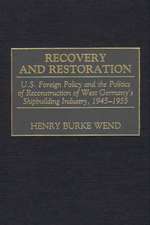Apollo Moon Missions: The Unsung Heroes
Autor Billy W. Watkinsen Limba Engleză Hardback – 29 dec 2005 – vârsta până la 17 ani
Preț: 287.37 lei
Preț vechi: 349.57 lei
-18% Nou
Puncte Express: 431
Preț estimativ în valută:
54.99€ • 57.42$ • 45.41£
54.99€ • 57.42$ • 45.41£
Carte tipărită la comandă
Livrare economică 15-29 aprilie
Preluare comenzi: 021 569.72.76
Specificații
ISBN-13: 9780275987022
ISBN-10: 0275987027
Pagini: 224
Dimensiuni: 156 x 235 x 23 mm
Greutate: 0.49 kg
Editura: Bloomsbury Publishing
Colecția Praeger
Locul publicării:New York, United States
ISBN-10: 0275987027
Pagini: 224
Dimensiuni: 156 x 235 x 23 mm
Greutate: 0.49 kg
Editura: Bloomsbury Publishing
Colecția Praeger
Locul publicării:New York, United States
Notă biografică
Billy Watkins a lifelong Mississippian, has been a newspaper reporter for three decades in his home state, telling the stories of its people. After earning a journalism degree from the University of Mississippi, he was a sportswriter from 1975 to 1990 at The Meridian Star, Jackson Daily News and the Jackson Clarion-Ledger. He was voted by his peers the state's Sportswriter of the Year three times. He then moved to general features at the Clarion-Ledger, where his work has earned him more than 40 regional and national awards. He proudly reminds people that the Saturn V rockets, which powered our astronauts on their way to the moon, were all tested in Mississippi, at Stennis Space Center.
Cuprins
Foreword by Fred HaisePrefaceAcknowledgmentsHistory of Apollo".The Eagle has landed"Steve BalesBruce McCandlessRichard UnderwoodClancy Hatleberg"We're not the Soviets"Julian ScheerJoseph LaitinHugh Brown"Thunder at the Cape"JoAnn MorganJoe SchmittJack King"Marriage, Missions, and Moon Cars"Joan RoosaRodney RoseGerry GriffinSonny MoreaU.S. Manned Missions SummaryGlossary
Recenzii
Project Apollo was one of the greatest achievements of the 20th century. In the 1960s, the US developed its space program from suborbital flights to lunar missions. Much has been written about the astronauts, flight directors, and other high-level officials who were instrumental in the Apollo program, but this book focuses on others at lower levels who played important roles in the successes of Apollo. For instance, guidance officer Steve Bales made a critical call during Apollo 11, the first manned lunar landing. As the lunar module descended, several alarms sounded, but Bales decided within seconds that these were due to computer data overloads and that it was safe to continue the landing. The images from Apollo were stunning; Richard Underwood was the NASA chief of photography who trained the astronauts in this important skill. Others featured include members of the Navy recovery team, public affairs officials, telemetry and communications technicians, and the designer of the Lunar Rover, among others..Recommended. General readers.
Journalist Watkins takes advantage of decades of close attention as he recounts the stories of some of the thousands of men and women who made getting to the moon their daily work and uncanny passion. He includes the story of a publicist who lobbied for a television camera on Apollo 11, without which we would not have seen Neil Armstrong take that step, specialists on signal-jamming USSR submarines and lightening, and the lucky folks who got to design the Moon Rover. It is clear Watkins would like to acknowledge the efforts of all (picking just 14 must have been agonizing) but those appearing here are truly representative of a breed of scientist and engineer, whose pie-in-the-sky thinking actually worked.
Journalist Watkins takes advantage of decades of close attention as he recounts the stories of some of the thousands of men and women who made getting to the moon their daily work and uncanny passion. He includes the story of a publicist who lobbied for a television camera on Apollo 11, without which we would not have seen Neil Armstrong take that step, specialists on signal-jamming USSR submarines and lightening, and the lucky folks who got to design the Moon Rover. It is clear Watkins would like to acknowledge the efforts of all (picking just 14 must have been agonizing) but those appearing here are truly representative of a breed of scientist and engineer, whose pie-in-the-sky thinking actually worked.

















